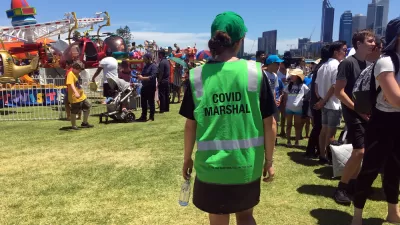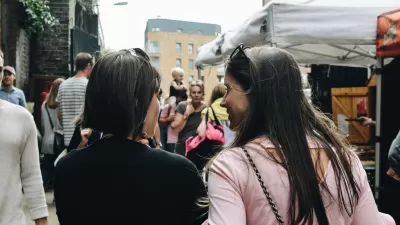Organizations blend past and present strategies to stay in touch with community members.

When COVID-19 began spreading across the country earlier this year, and Americans were ordered to stay at home and socially distance, they turned to technology. Since then, many aspects of everyday life have become virtual–starting with work and school and eventually including traditionally in-person events like baby showers, birthdays, and weddings; cooking and fitness classes; conferences; concerts and plays; and even dance parties. A Pew Research Center survey conducted in early April found that roughly 54 percent of U.S. adults said that the internet became essential for them during the pandemic.
As the pandemic pushed people to rely more heavily on technology to stay connected, it also made it undeniable how much more work needs to be done to resolve the digital divide. In a report published last year, the Federal Communications Commission estimated that there were 21 million Americans who lacked broadband access at the end of 2017. Reliable high-speed internet, as defined by the FCC, is having download speeds of at least 25 megabits per second (Mbps) and upload speeds of at least 3 Mbps. In other words, having high-speed internet access is a luxury. This has become especially apparent in the country’s education system. It’s estimated that more than 9 million schoolchildren lack access to high-speed broadband internet at home. According to the Pew Research Center, those who are less likely to have broadband service at home include racial minorities, older adults, rural residents, and those with lower levels of education and income.
Closing the digital divide requires reliable and affordable internet, adequate devices, and digital literacy skills. Outside of schools and libraries, nonprofit organizations are often the bridge for the digital divide in their communities. However, that work has become more challenging as face-to-face gatherings have been restricted. Nonprofits were forced to ...
FULL STORY: Crossing the Digital Divide During COVID

Alabama: Trump Terminates Settlements for Black Communities Harmed By Raw Sewage
Trump deemed the landmark civil rights agreement “illegal DEI and environmental justice policy.”

Study: Maui’s Plan to Convert Vacation Rentals to Long-Term Housing Could Cause Nearly $1 Billion Economic Loss
The plan would reduce visitor accommodation by 25% resulting in 1,900 jobs lost.

Planetizen Federal Action Tracker
A weekly monitor of how Trump’s orders and actions are impacting planners and planning in America.

Federal Homelessness Agency Places Entire Staff on Leave
The U.S. Interagency Council on Homelessness is the only federal agency dedicated to preventing and ending homelessness.

Restoring Northern India’s Himalayan ‘Water Temples’
Thousands of centuries-old buildings protect the region’s natural springs and serve as community wells and gathering places.

Milwaukee to Double Bike Share Stations
Bublr Bikes, one of the nation’s most successful, will add 500 new e-bikes to its system.
Urban Design for Planners 1: Software Tools
This six-course series explores essential urban design concepts using open source software and equips planners with the tools they need to participate fully in the urban design process.
Planning for Universal Design
Learn the tools for implementing Universal Design in planning regulations.
Caltrans
Smith Gee Studio
Institute for Housing and Urban Development Studies (IHS)
City of Grandview
Harvard GSD Executive Education
Toledo-Lucas County Plan Commissions
Salt Lake City
NYU Wagner Graduate School of Public Service





























